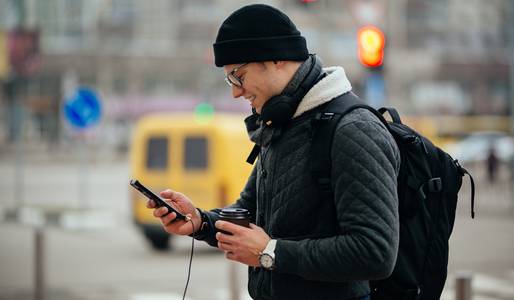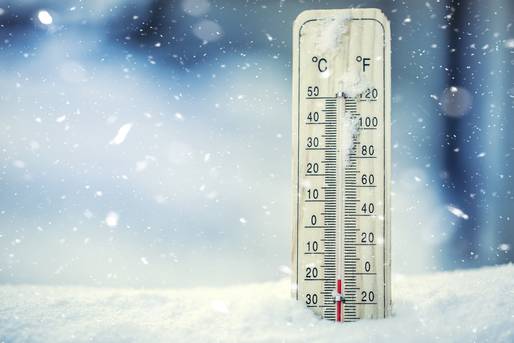Protecting your phone from the cold » Tips and tricks for winter
Published: 25.11.2021 | Reading time: 7 minutes
Is your cell phone not doing what it should? Is the battery draining particularly quickly? The smartphone display responds very slowly or not at all?
This is due to the cold temperatures and humidity in the air during the winter months.
Cell phones are also exposed to these particular stresses in winter.
We provide tips on how to protect cell phones from the cold and moisture using simple means.
In the cold winter months, usually from November to March in Germany, we often experience sub-zero temperatures. This biting cold and wet conditions (snow, ice) present a special challenge for any cell phone or smartphone. It does not correspond to the optimum temperature range in which it should be operated.
What are the optimum operating temperatures?
Many manufacturers such as Samsung and Apple provide recommendations for the optimum operating temperature for cell phones and batteries on their websites. Samsung batteries reach their optimum performance between 0 and 35 degrees Celsius. At extreme temperatures, however, protective mechanisms are activated. For example, the charging process is restricted. The manufacturer also warns against sudden shutdown and a shortened battery life.
Apple also recommends a temperature range between 0 and 35 degrees Celsius for the use of iPhones. According to this, lower temperatures can cause the iPhone to “change its behavior”. This means it regulates its own temperature. Under very cold conditions, the battery life can be shortened. It is also possible for the smartphone to switch off.
If you travel a lot in winter or do winter sports, you should pack your smartphone well.
Cell phone cases are not only stylish, but also practical. They protect against damage caused by drops. Some models also protect against moisture.
There are protective cases with insulating materials such as neoprene or felt, which extend the battery life of the cell phone. Neoprene in particular protects against rapid temperature fluctuations and moisture.
If a smartphone with such a “rubber cover” falls into the soft snow, there is really nothing to worry about.
Normally, smartphones do not immediately switch off at temperatures below 0 degrees Celsius. Apple even specifies a storage temperature of up to a frosty -20 degrees Celsius for its iPhone. Nevertheless, it is better not to use a smartphone in winter when it is this cold. To protect your cell phone and battery, it should be kept warm.
Carrying your cell phone close to your body
Stored loosely in a backpack or bag, cell phones cool down quickly in sub-zero temperatures. The easiest way to prevent this cooling is to carry your smartphone as close to your body as possible. It is sufficient to put it in your trouser pocket or inside jacket pocket. This way, it is kept warm by the heat that your body radiates. Cell phone sleeves to wear around your neck are also suitable. This allows you to carry the device under your jacket. It is then protected from the wind and weather in winter.
Furthermore, the cell phone should only be used for as short a time as possible in icy temperatures. Minimize the use of apps that consume a lot of power (games, videos, apps with location services, etc.) or better not use them at all. They put an additional strain on the battery.
Even in the cold season, a cell phone should not be left in a parked car or other unheated rooms.
If it is left inside, the operation of the touchscreen may be impaired. In the worst case scenario, the cell phone battery will be completely drained.
If it is brought into a warm home from the cold, it must not be charged immediately.
As described above, the device must first adapt to the ambient temperature. You should avoid heating it up too quickly.
Good to know: Why does the touchscreen become so slow in extreme cold?
If the screen is a “Liquid Crystal Display” (LCD), then it consists of liquid crystals that become increasingly sluggish in the cold. The same applies to IPS and TFT displays. As a result, they no longer react “smoothly” to finger movements. A smartphone display with OLED technology has a slight advantage. The light-emitting diodes made of organic material are more resistant to cold than liquid crystals.
Large temperature differences should be avoided. Otherwise, condensation can quickly form in the housing due to the cold-warm change in a short period of time. This can damage the cell phone. So what should you do if it is -10 degrees outside and 25 degrees inside in winter? Very important: Let the smartphone warm up slowly! It is better to keep it in your pocket for a while so that it can warm up.
Warm your own hands with tea: Yes! But under no circumstances should a cell phone be placed on a heater in winter! This would fog up the display of the still cold cell phone and this condensation could get inside the cell phone. There it can damage the electronics and even cause a short circuit.
If a drop in temperature cannot be avoided, the cell phone should be switched off beforehand to protect it.
If possible, it should remain switched off until it has acclimatized to the new ambient temperature.
At very low temperatures: Simply switch off the device outside and leave it in your pocket.
Instead, enjoy your walk or visit to the Christmas market with full attention.
Beware of hidden water such as snow and ice. Because snow and ice are nothing more than frozen water. As soon as it is cozy and warm again and this melts, it can also damage the cell phone. If water gets into the device despite all precautions, switch off the cell phone immediately. Do not shake it indiscriminately, otherwise it may penetrate even deeper. If possible, do not press any mechanical buttons (exception: power button for switching off), otherwise the water will spread even further inside the device. If possible, remove the battery, SIM card and other small parts.
Allow the cell phone to dry slowly
The cell phone must be allowed to dry for at least one day before it can be switched on again. For example, if condensation has formed inside. If more water has penetrated, it should be allowed to dry for at least three days. It makes sense to store it in a normally heated room so that as much water as possible can drain away.
As a rule, smartphones should not be opened. They should be stored with the SIM card slot facing downwards. This allows drops of water to fall inside and drain away.
Apple recommends holding the Lightning connector down on your hand and gently tapping the iPhone. It should also be placed in a dry area with a slight current of air blowing into the Lightning connector.
Good to know: Emergency kits against water damage
Emergency kits or rescue kits against water damage are now also available to buy. These contain highly efficient desiccant (usually granules) in a dry bag that removes moisture from electronic devices. This is intended to prevent serious damage. The smartphone and desiccant bag are placed together in a rescue bag. You must then wait one to two days.
Under no circumstances should a cell phone be dried with a heat source! The high temperatures can damage the cell phone. This means: Do not use a hairdryer, oven or microwave! However, the use of rice instead of drying bags is controversial. We therefore advise against it.
Cold temperatures can damage your smartphone battery. But the fuller it is, the better it can withstand the cold.
However, if the battery is (almost) empty at some point, the smartphone and battery should be slowly brought back to room temperature before charging.
This means waiting at least half an hour (preferably 60 minutes) after coming in from outside. This is because lithium-ion batteries charge more slowly and not fully when cold. It is therefore important not to charge the battery cold.
If you definitely don't want your expensive smartphone or new cell phone to be damaged by the cold, you can switch to a robust outdoor smartphone in icy temperatures.
This type of phone is particularly shock-resistant and is usually also water and dust-tested.
Changing the SIM card can be saved by using another SIM card (with the same number).
When it's very cold, automatically answering calls with a Bluetooth headset is very practical. The smartphone can remain close to your body (for example in your trouser pocket). As soon as it rings, the call is automatically answered by the device. It's only bad if someone calls who you don't want to talk to at the moment. But maybe the battery is flat after all.
Of course, the smartphone can also be operated via headphones using voice control (Siri or Google Assistant). So it can stay in the warm, dry inside pocket. However, it should be noted that Bluetooth devices usually also work on batteries and cold temperatures can affect battery life and performance.
Our tips are designed to help you “winterize” your smartphone. The first step is certainly a waterproof and shockproof phone case.
Then it is important to keep the device and battery warm and dry. For example, in your trouser pocket. It is better to close power-hungry apps and avoid extreme temperature fluctuations.
But with all due caution, a smartphone is only really safe at home in winter, whether you're tobogganing or out for a winter walk.
If you can't do without it, pack it well. Everyone else should perhaps treat themselves to a cell phone break.











